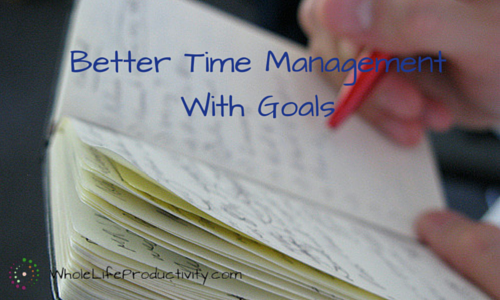
Adapting Productivity with Limitations
Mondays are productivity days at SimpleProductivity blog.
A reader asked me for help on being productive when you’re limited. This limitation could be physical, energetic, time-based, or something else, and it may be variable on any given day.
Today we will look at adapting productivity techniques so you can get as much done as possible, whatever your limitation might be.
Conditions, Gotchas And Strategies
Adapting For Low Energy
Many medical conditions can produce fatigue that is extreme, and not easily remedied. Energy levels will differ between days, and even between times of the day. Even a bad cold can wipe out your reserves, albeit on a short-term basis.
When working with low energy, you need to consider not only what your level of energy currently is, but how much energy you can expend on tasks. You have to be careful not to overextend yourself and drain yourself completely.
In order to have this awareness, you are also going to need to know how much energy every task on your list is going to take. You could use the priority or a tag to indicate the level of energy: low, medium, or high. Then you can see at a glance the tasks available to you depending on where you are.
Example: you are tired but feel you can get some things done. You look at your task list and filter for tags that are “low-energy”. You see “clean out your sock drawer”. So you sit with the contents of your sock drawer and get rid of unwearable socks.
Adapting For Little Time
Many people, in spite of cutting back all commitments, are still stretched too thin. They barely have time to breathe, much less tackle tasks.
When you are working with a lack of time, you will need to know how long each task will take, whether it can be done on the go, and if it can be broken down further. If you are consistently in a time crunch, break down as many of your tasks as possible into ones that take no longer than 10 minutes.
Example: you start scheduling meetings to last 45 minutes to build in margin. In those 15 minutes, you check your task list and see “clean out 2 file folders from the archive.” So you grab the file folders, purge what isn’t necessary and put them back before going to your next meeting.
Adapting For Physical Limitations
As I am writing this, my foot is propped up on a box because I broke a toe last weekend. I know people have a wide variety of physical limitations, and most are much more severe than my current one, but any physical limitation can have an impact on productivity.
In order to adapt for a physical limitation, you have to know what you can do (and what you will need help with) and then plan accordingly. If your mobility is impaired, you might want to tag your tasks by where they need to be done, like “kitchen” or “bedroom”.
Example: right now I can’t do stairs very well. Breaking the toe meant I took my arch supports out, and know my opposite knee is swollen and painful. So I have to minimize the trips up and down stairs. When I get home from work, I do everything I can downstairs before going upstairs. There are a couple of light bulbs I need to change, but there is no way I can do a stepladder right now, so I have flagged that task as “delegate” so I can pass it on to my husband.
Key Takeaway
There are a few key ideas that you need to know it adapting any productivity system.
Classify Your Tasks
You need to classify your tasks so that you can quickly find the ones you can do. Tagging is very helpful for this; you can even put the keyword in your task name, if necessary. Add tags for energy, specific room location, delegation and/or time – however you need to classify the tasks so that when it comes to actually doing them you are not stuck trying to figure out what you can do.
Do Something
“How do you eat an elephant? One bite at a time.” Focus on what you can do, and do something, anything. When you are done with the one task, see if you can do another.
Don’t Overextend
The danger with anyone doing a task list, but more so with limitations, is to try and push beyond them. Listen to your body, take stock of your energy and time available, and work within those parameters. Pushing beyond them is not a good idea, because it will drain you, injure you, or make you frazzled and late.
Make It Easy
I believe in Simple. If something isn’t simple and easy, it’s not going to get done. I keep cleaning supplies where they are used so that I don’t have to go fetch supplies. If I have two minutes to clean a shower door, the supplies are right there and I do it. The bird food is stored in the garage so I can grab it on the way to the bird feeder – and not have to go to an outbuilding on the other side of the property and unlock it to get the seed.
Conclusion
It is possible to adapt any productivity method for limitations. Classify your tasks so you know what to do, do something that you can, don’t overextend, and make it easy for yourself. You will find your productivity increasing.
Photo by +Angst. Licensed under Creative Commons.





One Comment
Bonnie R
Thanks for the helpful article. I especially liked that you addressed the idea of limitations from several aspects as well. I have shared it with a couple friends who will also appreciate it.